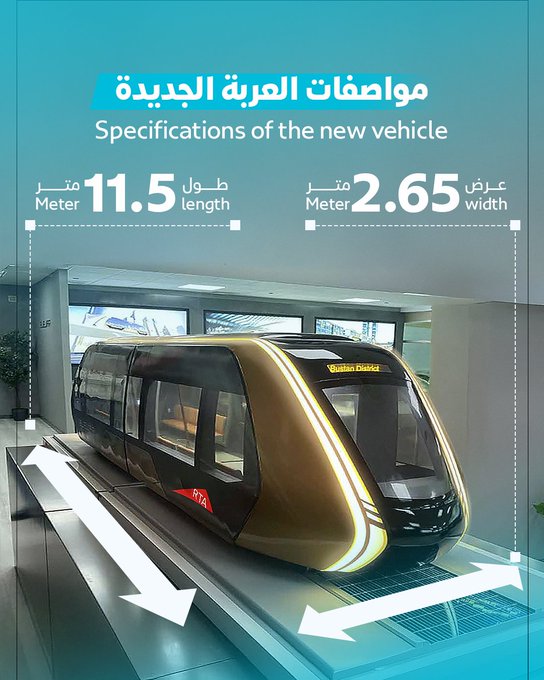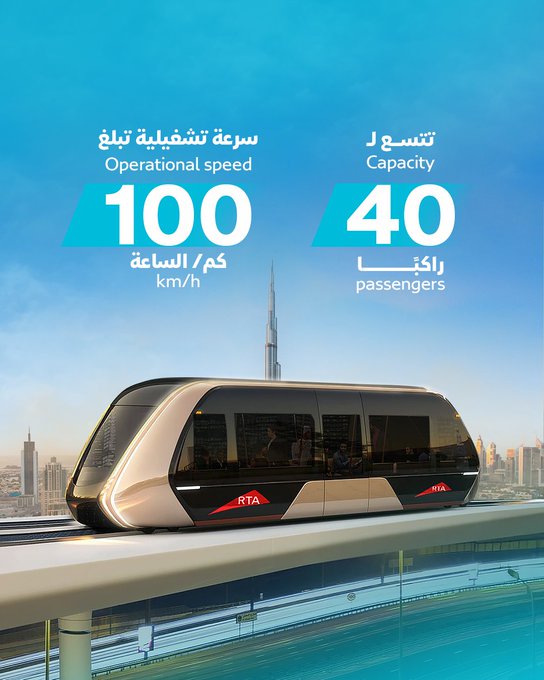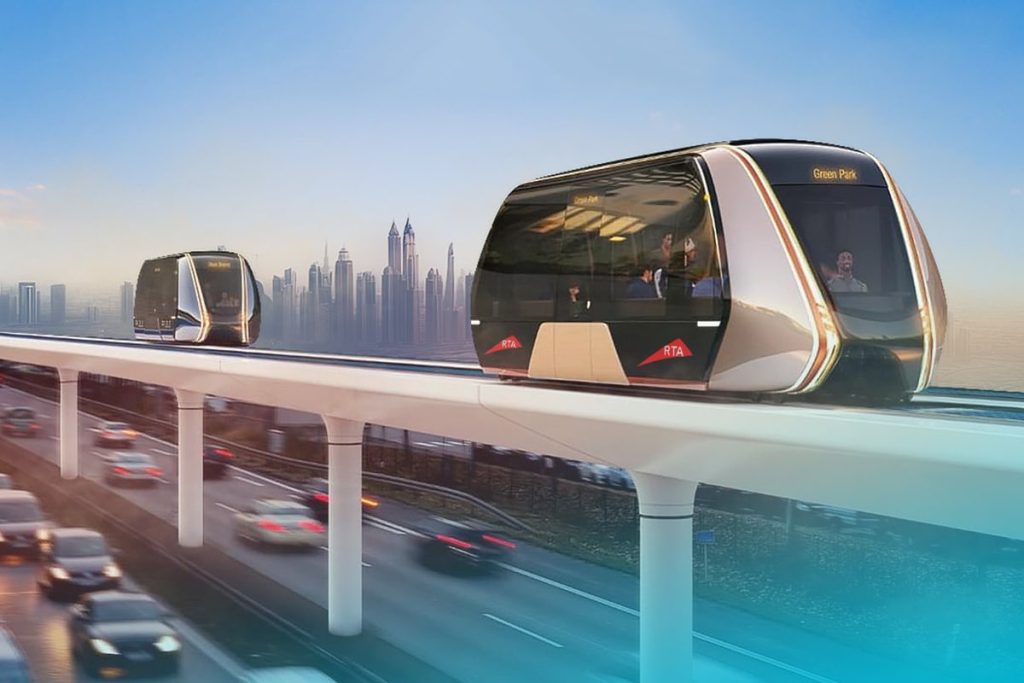Some of the links in this article are "affiliate links", a link with a special tracking code. This means if you click on an affiliate link and purchase the item, we will receive an affiliate commission.
The price of the item is the same whether it is an affiliate link or not. Regardless, we only recommend products or services we believe will add value to our readers.
By using the affiliate links, you are helping support our Website, and we genuinely appreciate your support.
Dubai is set to introduce a brand-new transport system called the Rail Bus, as announced by the Roads and Transport Authority (RTA) at the World Government Summit. This innovative project aims to reduce traffic congestion and provide a sustainable, eco-friendly, and cost-effective way to travel across the city.
The Rail Bus will operate like a bus but run on tracks, moving across a network of bridges. It will be 11.5 meters long, 2.65 meters wide, and capable of reaching speeds of up to 100 km/h. Each Rail Bus can carry 40 passengers, adding to Dubai’s existing public transport options, including the Metro, Tram, buses, and taxis.
How Does the Rail Bus Compare to Other Rail Systems?
- Rail Bus vs. Dubai Metro:
- The Dubai Metro is a fully automated rail system with larger trains that can carry hundreds of passengers at once. It operates on fixed tracks and stations, covering longer distances across the city.
- The Rail Bus, on the other hand, is smaller and more flexible, designed to move on elevated tracks and bridges. It’s ideal for shorter routes and areas where building a full metro system might not be feasible.
- Rail Bus vs. Etihad Rail:
- Etihad Rail is a national railway network connecting the UAE’s major cities and industrial hubs. It’s designed for long-distance travel and freight transport, with trains reaching speeds of up to 200 km/h.
- The Rail Bus is focused on urban mobility within Dubai, offering a faster and more efficient alternative to traditional buses while complementing the Metro and Tram systems.
- Rail Bus vs. Traditional Railroads:
- Traditional railroads, like those used for freight or intercity travel, are built for heavy loads and long distances.
- The Rail Bus is a lighter, more agile system tailored for city commuters, with a focus on reducing traffic and providing a greener alternative to cars.
Dubai’s Road Infrastructure Transformation
This initiative is part of Dubai’s efforts to transform its road infrastructure, reduce carbon emissions, and improve the quality of life for residents. Other measures include dynamic pricing on toll gates (Salik), higher parking fees, and congestion charges. Additionally, four neighborhoods—Al Fahidi, Abu Hail, Al Karama, and Al Quoz Creative Zone—will become car-free pedestrian zones under the Super Block initiative.
His Highness Sheikh Hamdan bin Mohammed bin Rashid Al Maktoum, Crown Prince of Dubai, shared updates on these projects, which align with the Dubai 2040 Urban Master Plan. The RTA has already reduced traffic by 60% in some areas through upgrades to 50 locations, including Beirut Street and key intersections.
Stay tuned for more updates on the Rail Bus project!
Discover the new ‘Rail Bus’ by #RTA at the #WorldGovSummit 2025, with an operational speed of 100 km/h, and a capacity of 40 passengers.




Follow RTA on social media:
- Instagram: @rta_dubai
- Facebook: RTA Dubai
- Twitter: RTA Dubai
Images: RTA Social Media



